Worm Farm: The Worm Composting Guide
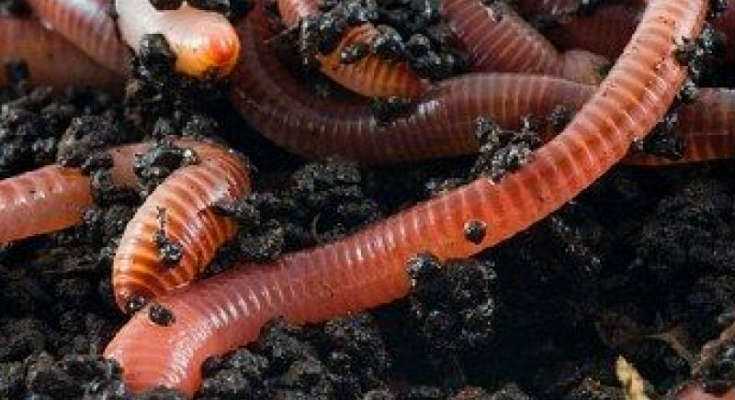
Aristotle called worms “the intestines of the earth.” Cleopatra credited them for the fertility of the Nile River Valley. Farmers have relied on them for fertility and fruitfulness for millennia. Earthworms are gardener’s best friend. In this article we are investigating the benefits of a worm farm and offer a practical guide to worm composting.
Earth Worms
These tiny, slimy creatures can eat and digest up to half of their body weight and their excrement provides perhaps the most effective fertilizer for gardens.
As the earthworm’s diet passes through its digestive tract, it makes its way back to the soil, enriching it with water-soluble nutrients and thousands of microbes that help plants thrive and fight off disease.
Because of its numerous advantages, many gardeners turn to worm farms to help breed more of their greatest asset.
What is a Worm Farm?
It does not take long to spot earthworms in garden soil that has been tilled. But farming composting worms can provide a gardener with more worms, more organic fertilizer for soil and, ultimately, more fruitful plants. For this, you need a worm farm.
A worm farm is essentially a place where many worms can live, breed, eat, and excrete in a controlled environment. Worm farms can exist in small composting bins, or as large commercial businesses. But the goal is the same: more worms, more excrement, more fertilizer.
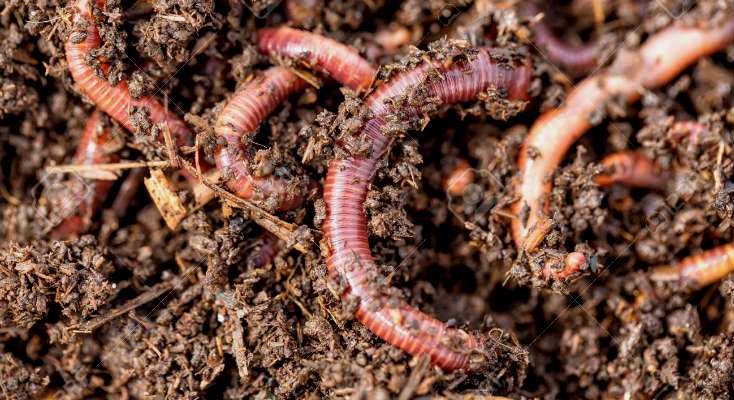
Worm Composting
The process in which worms convert their food into fertilizer in a worm farm is called vermicomposting, or worm composting. Worm composting can be both simple and cost-effective. It can be done virtually anywhere – indoors, outdoors, in a wooden box, plastic container, or even a large bucket.
Worms cannot tolerate cold temperatures, direct sunlight, or too much dry heat. For worms to thrive, they require a moist, dark, and warm environment with air ventilation and, of course, food.
Kitchen scraps make great worm food, help households cut down on waste, as well as provide quality nutrients for the worms. Raw fruit and vegetable scraps, coffee grounds, and dried or damp bread are great options for worm food.
Starchy foods such as rice, pasta, and potatoes are also excellent food sources for composting worms. Try to avoid oils, dairy, and meat products because they are made of more complex substances and take longer to decompose.
Also, avoid citrus and other acidic fruits, as they take longer to break down and can also attract fruit flies.
Indoor Worm Composting
One of the great things about worm composting is its versatility. A composting bin can easily be fashioned indoors using a large, plastic container and can be kept either inside or outside. Just make sure the temperature is maintained between 50 to 70 degrees Fahrenheit.
Because kitchen scraps make great worm food, one convenient option is to store the composting bin under the kitchen sink.
Another reason to consider indoor worm composting is that it protects worms from the outdoor elements. As we have already established, worms require warmth, but cannot tolerate direct sunlight. Keeping them indoors helps ensure they get enough darkness and moisture.
Indoor worm composting is also a great option for those who live in apartments or a in a city and do not have the outdoor space for a composting bin. Tossing kitchen scraps into a composting bin is also an excellent alternative to adding them to trash bins.
Worm Bedding
Worm bedding is essential to a worm farm or composting bin’s productivity. Newspaper strips are probably the most common bedding used, but a variety of materials can be considered, such as shredded cardboard, aged compost, straw, hay, dried leaves, wood chips, and even aged manure.
Make sure that worm bedding is damp, but not soaking wet. Occasionally, more bedding should be added to the worm farm, as composting worms will also eat and digest the bedding, along with their food scraps.
Remember to avoid materials with sharp edges or abrasive textures, as worms have very delicate skin that can be damaged. Only use materials that will hold moisture and are not too dense for air flow.
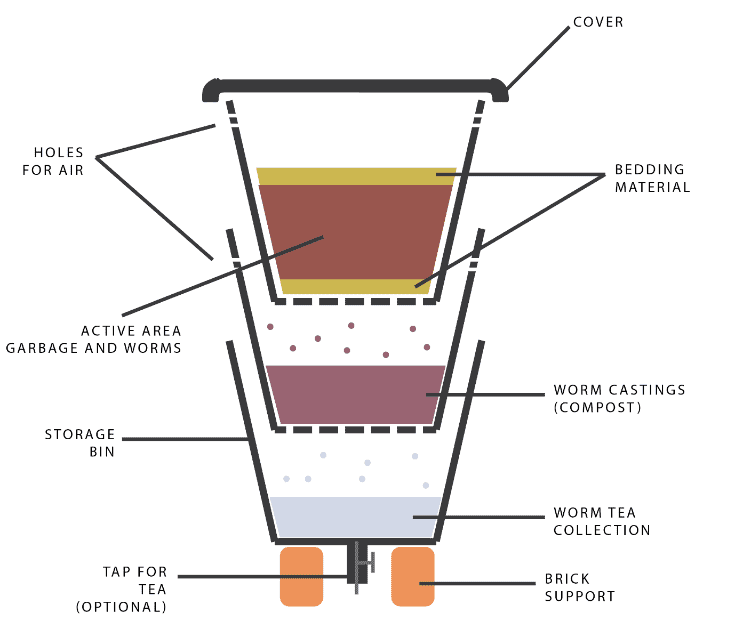
Worm Castings
Worm castings are the finished product of worm composting. A worm cast is a mass of football-shaped excrement – essentially worm poop – that can amend soil and provide nutrients to almost any type of plant.
Unlike some pre-packaged fertilizers, it is completely safe to use on every part of the plant, as it will not scorch or damage its roots or leaves.
Harvesting Worm Castings
After the worms have eaten though most of the contents of their composting bin, it is time to harvest the worm castings. There are a few different options for gathering the castings. To use the pyramid method, wait until most of the worm compost container has turned into worm casting, then pour out the contents of the container onto a tarp or drop cloth on a sunny day.
Form a few small piles into a pyramid or cone shape. In an effort to avoid the sunshine, the worms will burrow down into the pyramid, leaving behind only their castings. Brush off the outer layer of castings and set them aside. Repeat this process until all the castings have been harvested and only the worms are left.
Another option employs a screen or hardware cloth and also needs to take place on a sunny day. Simply place the screen or hardware cloth on top of a container and dump the contents of the worm composting bin onto the screen.
The worms will burrow down under the screen to avoid the sunshine and only the worm castings will be left on the top of the screen where they can be easily harvested
For these methods to be used effectively, they require sunshine and the outdoors. However, another solution is to simply reach down into the compost bin and pull out the castings by hand. It may not be as thorough, but it can be done indoors and with less hassle.
What is Worm Tea?
Worm tea is a liquid substance made from harvested worm castings that adds good bacteria, protozoa, and actinomycetes to plant soil. Basically, it is highly nutritious plant juice.
To make worm tea, add harvested worm castings to a porous fabric such as panty hose or an old t-shirt, and tie the loose ends together fashioning a tea bag of sorts. Next, place it in a five-gallon bucket of water to steep overnight. The contents of the castings will seep into the water and, Viola! The worm tea is finished.
To use the tea for potted or house plants, dilute the worm tea with equal parts water and worm tea. Using a watering can or spray bottle, apply the liquid to the plant’s soil or spray it directly to the plants.
How to Build and Maintain an Organic Worm Composting Bin?
Considering the benefits of worm composting, it should be noted that making an organic worm composting bin is both simple and cost-effective. To make your own worm bin, you will need:
- A power drill or a hammer and nail
- A large plastic storage container with a lid (a five-gallon bucket will also work)
- 2 cups of dirt
- 1 cup of composting worms
Instructions:
Using the drill or nails, make two rows of holes around the top of the bin. These will serve as ventilation holes for the worms and should be spaced 3-4 inches apart. The holes should not be more than half an inch wide. Do not put holes near the bottom, as it will cause leaking.
Place worm bedding, such as shredded cardboard or newspaper in the bottom of the bin. Wet the bedding by drizzling water over the top of it. The bedding should be damp, not soaking wet. There should not be standing water in the bottom of the bin.
Once there is 4 to 6 inches of bedding in the bin, add about 2 cups of soil. Toss all the contents together to mix it.
Finally, add the worms, along with food scraps such as fruit and vegetable scraps (worms especially love squash!), coffee grounds or bread. Worms eat rotting food, so allow a few days for the food to start decomposing before expecting the worms to devour it.
To maintain the bin, be sure to keep it moist and dark with a lid or cover. If the contents of the bin start to get too soggy, add more bedding and mix it in with the soil to absorb the extra moisture.
About once a week, add more bedding and food scraps and check on the progress of the composting bin.
Commercial vermiculture bins are also rising in popularity. It may be convenient to purchase a kit for help getting started.
Check out our reviews of the best compost bins if you want to have a pre-built solution right now.
You may also want to consider transportation of the compost, for example with a fairly popular garden cart.
What are the Best Worms for Composting?
Generally, any type of soil-based worm is referred to as an earthworm. But when farming worms for vermiculture or vermicomposting purposes, not just any earthworm will do. It is helpful know what types of worms make the best composters and reach an informed decision.
Red Wiggler Worms
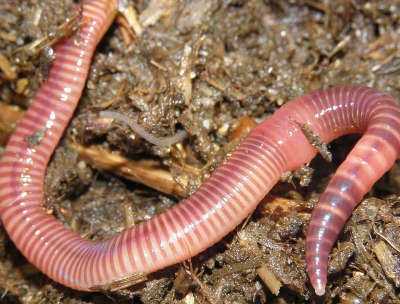
Red Wiggler Worms - The Best Worms for Composting?
Red Wiggler worms are ideal candidates for composting. Not to be confused with soil-dwelling worms which can also be red or purplish in color. Red Wiggler worms love manure and rotting foods, which makes them the stars of the vermicomposting world.
Like most earthworms, they are hermaphrodites, meaning they possess both male and female reproductive organs and can reproduce very quickly.
Red Wigglers have also been known to live up to 8 years. They eat and digest at rapid rates, meaning they also excrete at rapid rates and provide high yields of worm castings to be harvested.
Red Wigglers may be purchased in some local areas – usually rural – from a worm farm, but a plethora of online retailers also offer the worms in varying quantities.
European Night Crawler Worms
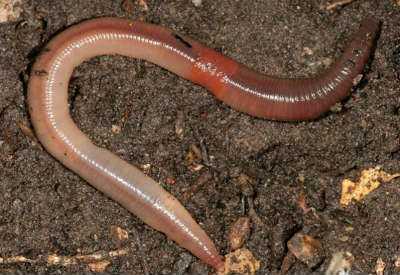
European Night Crawler - The Runner Up for Worm Farms
European Night Crawlers are often the preferred composting worm in the United Kingdom. They grow up to two times longer than the Red Wiggler. European Night Crawlers are quick breeders as well, but not quite as quick as their wiggler counterparts.
Because they are larger, they do typically need a little more room in their worm farms and composting bins.
While they eat a little less than wigglers, they still have hearty appetites and can double their population in three months if given the right conditions.
The European Night Crawlers may also be found in some local worm farms, but because they are not as popular in the United States as the Red Wigglers, it may be easier to order them from an online retailer.
Tiger Worm or Eisenia Fetida
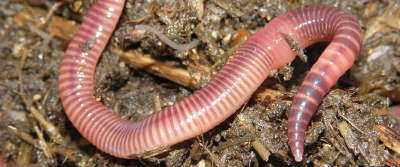
The Eisenia Fetida, more commonly known as the Tiger Worm or the Branding Worm is another favorite in the United Kingdom, though they are growing in popularity in the U.S.
They reach maturity and can begin producing at 6 weeks of age, making them excellent candidates for composting, as well.
Famous Worm Farms in the World
Uncle Jim’s Worm Farm
Commercial worm farms breed and sell worms for vermicomposting or fish bait, and often sell worm castings as fertilizers. They may also sell pre-made composting bins to individuals. Most worm farms offer their products online.
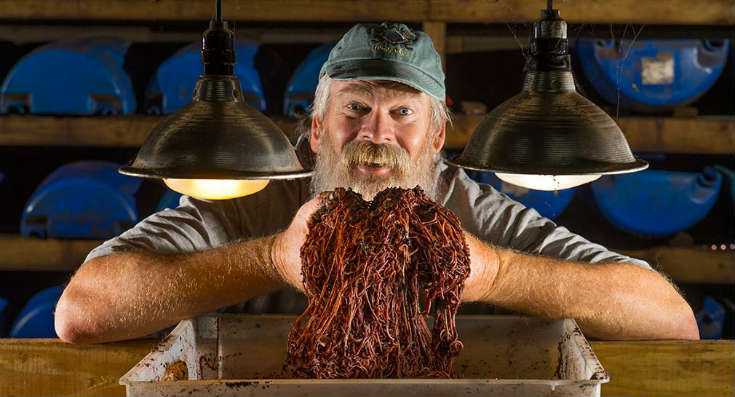
All things considered, worm farming is an eco-friendly, cost-effective way to make the most of the commodities nature has already given us. Worm composting is a method that has been employed for centuries: utilizing worms to create organic fertilizer and nutritious plant food.
The concept is simple enough for individual gardeners, and the method has been perfected to the point that it can produce a commercial business. All safe, all natural, and all thanks to these tiny champions of the dirt – the worm.
All in all, worm composting and having a worm farm is one of the best things you can do to your garden, the plants, and general well being of your yard. We have included this in the Top 5 Things to do in your Garden this Fall article, among other must do action!
